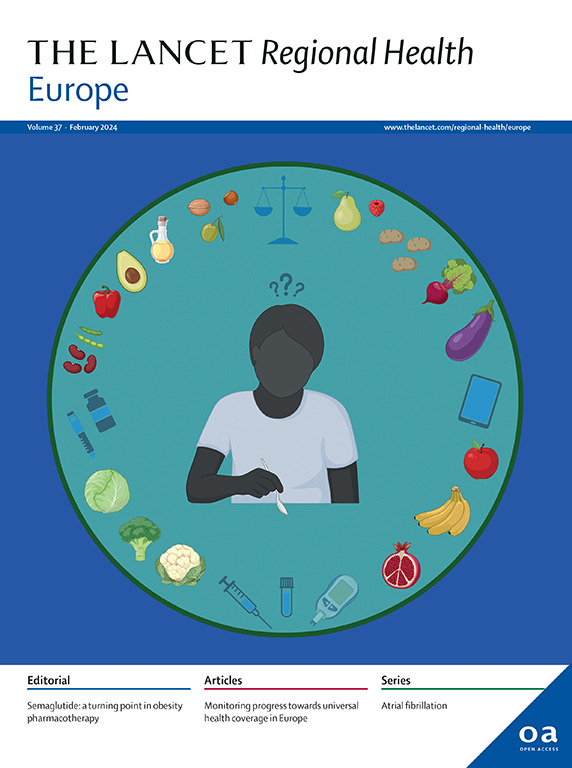Safety of a co-designed cognitive behavioural therapy intervention for people with type 1 diabetes and eating disorders (STEADY): a feasibility randomised controlled trial
IF 13.6
Q1 HEALTH CARE SCIENCES & SERVICES
引用次数: 0
Abstract
Background
Safe management of people with Type 1 diabetes and EAting Disorders studY (STEADY) is a complex intervention for people with type 1 diabetes and mild-to-moderate disordered eating (T1DE) integrating cognitive behavioural therapy (CBT) with diabetes education. Aim was to test feasibility of STEADY in a randomised controlled trial.
Methods
Feasibility parallel-group, randomised (blocks of four) controlled open-label trial (RCT) of STEADY against usual care (Control) at King's College London, UK. Participants were referred by clinicians or self-referred via social media advertisements. Forty adults with T1DE (Hba1c < 15%, body mass index 15–35 kg/m2, age ≥ 18 years) were randomised. STEADY was delivered in 12 sessions by a CBT-trained Diabetes Specialist Nurse through video-conferencing and mobile app. Main outcome at 6 months post-randomisation was feasibility. Baseline mental health data (Structured Clinical Interview for DSM-5, SCID-5RV), and secondary biomedical outcomes (HbA1c; glucose time in range; TIR) and person-reported outcome measures (PROM: Diabetes Eating Problems Survey-Revised, DEPS-R; Eating Disorder Examination Questionnaire Short, EDE-QS; Type 1 Diabetes Distress Scale, T1DDS; Generalised Anxiety Disorder Assessment, GAD-7; Patient Health Questionnaire, PHQ-9; Impact of Diabetes Profile, DIDP) were collected. Analyses were conducted as intention-to-treat. ClinicalTrials.gov NCT05140564.
Findings
Of the 98 screened, 40 participants with T1DE were randomised (recruitment rate: 40.81%; 95% CI: 31.60%, 50.72%): 38 women, 1 man, 1 trans man (37 White, 1 White/Asian, 1 Black; 39 ± 11 years old, diabetes duration 22 ± 15 years, HbA1c 9.1 ± 2.6%). The drop-out rate was 3/20 = 15% (4.39%, 36.55%) in STEADY and 2/20 = 10% (1.57%, 31.32%) in Control. STEADY reported lower GAD-7 (5.75 ± 2.89 vs 10.18 ± 5.31, p = 0.0060) and higher DIDP (3.13 ± 0.63 vs 2.46 ± 0.87, p = 0.020) at follow-up compared with Control, indicating lower anxiety and higher diabetes-specific quality-of-life. Compared to baseline, STEADY improved in DEPS-R, EDE-QS, GAD-7, PHQ-9 and T1DDS.
Interpretation
The STEADY-feasibility RCT demonstrated proof-of-concept for feasibility and mental health improvements in T1DE without deteriorating glycaemic control. A full scale RCT of STEADY will test effectiveness and implementation.
Funding
National Institute for Health Research (CS-2017-17-023).
求助全文
约1分钟内获得全文
求助全文
来源期刊

Lancet Regional Health-Europe
Multiple-
CiteScore
19.90
自引率
1.40%
发文量
260
审稿时长
9 weeks
期刊介绍:
The Lancet Regional Health – Europe, a gold open access journal, is part of The Lancet's global effort to promote healthcare quality and accessibility worldwide. It focuses on advancing clinical practice and health policy in the European region to enhance health outcomes. The journal publishes high-quality original research advocating changes in clinical practice and health policy. It also includes reviews, commentaries, and opinion pieces on regional health topics, such as infection and disease prevention, healthy aging, and reducing health disparities.
 求助内容:
求助内容: 应助结果提醒方式:
应助结果提醒方式:


